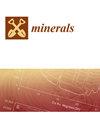基于Sentinel-2时间序列的露天矿湖泊酸性矿井排水建模——以德国Lusatia为例
IF 2.2
4区 地球科学
Q2 GEOCHEMISTRY & GEOPHYSICS
引用次数: 1
摘要
在卢萨蒂亚地区被水淹没的以前露天矿坑中,强酸性矿井排水过程对采矿后景观的恢复提出了巨大的环境挑战。为了实现最佳的AMD管理和补救计划和控制,需要广泛和昂贵的监测。由于区域面积大,问题维度大,常规采样只能提供有限的点数据,需要外推到整个区域。因此,寻找有效的方法,将点数据外推到所有水体的区域,对于恢复成功监测和理解AMD与环境因素(如土地利用、天气条件、地质和水文地质)之间的依赖关系至关重要。本研究的主要目的是研究Sentinel-2多光谱图像和人工神经网络(ann)在大约7220平方公里(坑湖面积约185平方公里)范围内对酸性矿山水(AMD)成分(如溶解铁、pH值和硫酸盐)进行定量测绘的适用性。研究了不同化学水参数之间的相关性。利用广泛的水监测数据集训练人工神经网络,以识别多光谱遥感数据与水质地面测量数据之间的依赖关系。已经确定了各自的关系,特别是溶解铁和ph。这些训练好的人工神经网络已被用于制作具有高空间(10 × 10米)和时间(任何无云期)分辨率的水质地图,这些地图显示了矿区不同地区水质的广泛变化。利用单个湖泊的水质图可以确定AMD的具体来源,并可视化了诸如石灰等卫生措施的成功。该方法为监测程序和卫生技术的优化打开了许多大门。本文章由计算机程序翻译,如有差异,请以英文原文为准。
Modelling of Acid Mine Drainage in Open Pit Lakes Using Sentinel-2 Time-Series: A Case Study from Lusatia, Germany
Strong acid mine drainage (AMD) processes in the flooded, formerly open pits in the Lusatia area present an enormous environmental challenge for the rehabilitation of the post-mining landscape. Extensive and costly monitoring is required for optimal AMD management and remediation planning and control. Because of the large size of the area and the dimension of the problem, the regular sampling can only provide limited point data, which needs to be extrapolated to the entire area. Consequently, the search for effective approaches for extrapolating the point data to the area of all water bodies is essential for rehabilitation success monitoring and for understanding the dependencies between AMD and environmental factors such as land use, weather conditions, geology, and hydrogeology. The main aim of this study was to investigate the suitability of Sentinel-2 multispectral imagery and artificial neural networks (ANNs) for the quantitative mapping of acid mine drainage (AMD) constituents, such as dissolved iron, pH value, and sulfate in large water bodies, for an area of approximately 7220 km2 (the area of the pit lakes is about 185 km2). Correlations between different chemical water parameters were also investigated. An extensive water monitoring dataset was used to train artificial neural networks for the identification of dependencies between the multispectral remote sensing data and the water quality ground measurements. Respective relationships have been identified, especially for dissolved iron and pH. These trained ANNs have been used to produce water quality maps with high spatial (10 × 10 m) and temporal (any cloud-free period) resolution, which show the wide variability of water quality in the different parts of the mining region. Concrete sources of AMD can be identified using the water quality maps of single lakes, and the success of sanitation measures such as liming was visualized. The approach opens many doors for the optimization of both the monitoring program and sanitation technology.
求助全文
通过发布文献求助,成功后即可免费获取论文全文。
去求助
来源期刊

Minerals
MINERALOGY-MINING & MINERAL PROCESSING
CiteScore
4.10
自引率
20.00%
发文量
1351
审稿时长
19.04 days
期刊介绍:
Minerals (ISSN 2075-163X) is an international open access journal that covers the broad field of mineralogy, economic mineral resources, mineral exploration, innovative mining techniques and advances in mineral processing. It publishes reviews, regular research papers and short notes. Our aim is to encourage scientists to publish their experimental and theoretical results in as much detail as possible. There is no restriction on the length of the papers. The full experimental details must be provided so that the results can be reproduced.
 求助内容:
求助内容: 应助结果提醒方式:
应助结果提醒方式:


